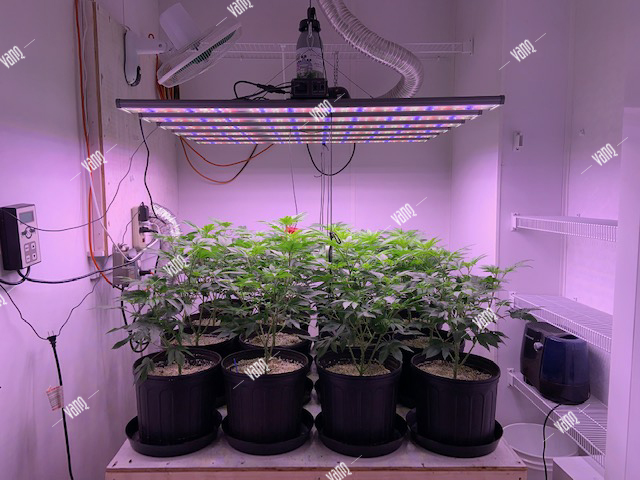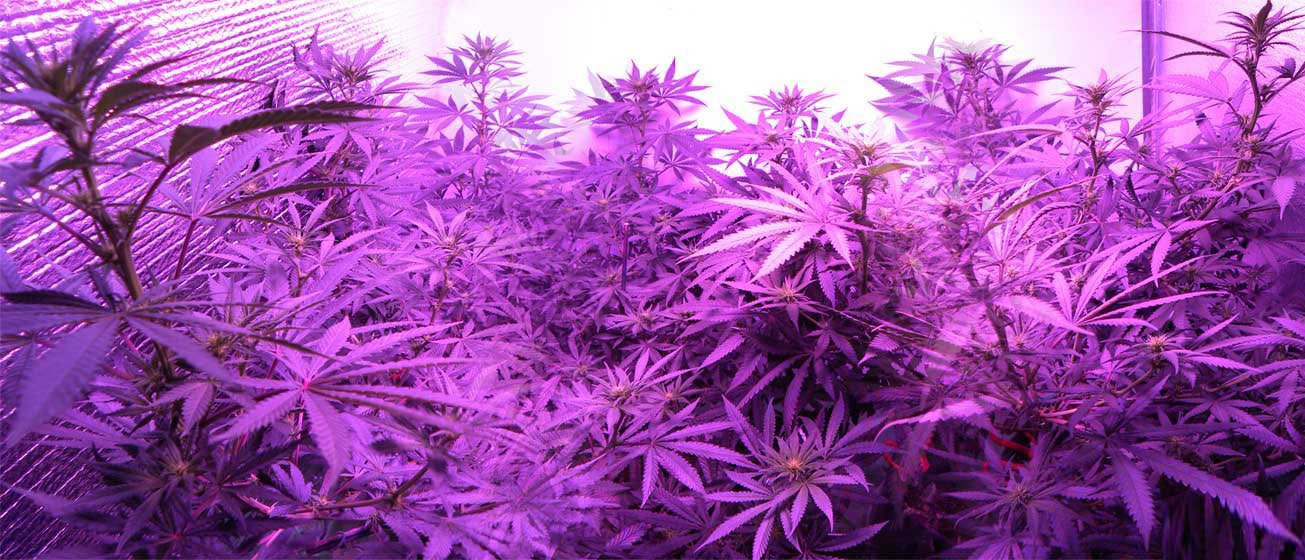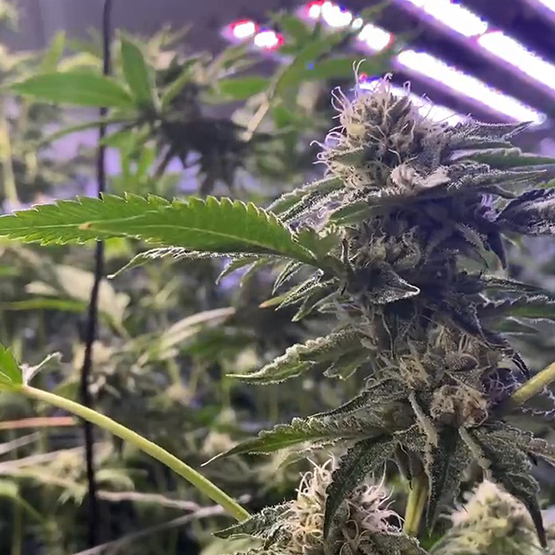LED lights to grow hemp

In this article, we will focus on promoting more new LED lighting systems. These systems use the energy emitted by light-emitting diodes, hence the name, the acronym for English Light-Emitting Diode. These diodes do not lose energy when emitting light, thus making full use of their power.
Since the LED itself does not have enough power, LED groups are made, so-called LED panels, which can contain more or fewer units, depending on the surface to be planted, and panels with different configurations can be found. What we can emphasize is that the spectrum of the LED can be adjusted according to the use you want, blue for growth, red for flowering, or a mixture of the two for two periods.
The LEDs will not lose power during use, they have a long life. In addition, the light they emit is continuous and will not cause any pressure on the plants.
In recent years, we have received a lot of information about LED performance, but not always verified information. A few years ago, when LEDs were first used for gardening renovations, these LEDs were sold as energy-saving panacea. We found that the advertisement clearly stated that 120-watt LEDs can produce up to 600-watt sodium lamps or similar nonsense.
After various tests on various LED models, we can say that we are facing a lighting system that can completely change indoor planting, but it is not because of energy saving, if any, it will not exceed 25% (on the other hand, this is A non-negligible number) if not because it allows us to easily manage the climate, especially in hot regions, and because plants are under the least pressure, whether it is climatic pressure or excessive direct radiation.
Compared with HPS lamps, LED panels emit very little heat radiation, which greatly promotes climate control during cultivation. In addition, because they don’t emit too much heat, they allow them to Cultivation in the area unless air-conditioning is installed, HPS is used for cultivation.
Since the heat emission is almost zero, there is no need to install a powerful ventilation system, only a small-capacity air extractor is sufficient (200m3/m2). It should be noted that it is best to have a small dehumidifier, which is easier to adjust the relative humidity of the growing environment, especially at night, and the smell of cannabis plants is more obvious and easier to detect. Due to the volatilization of terpenes, the temperature and focus on plants are higher. As compared with the HPS system, LED does not emit as much heat, so the volatilization of plant odor is less. Significantly reduce its perceptibility and improve the final product.
Another aspect to consider is the huge possibilities that LEd panels offer us in a small space, providing new possibilities for growers who do not have a large planting room.
The last thing to say is that the very broad color spectrum that constitutes the light emitted by the LED is more suitable for performing important processes in plants, and compared with high pressure, it can not only compensate for the lower lumen emission of sodium or halide lamps.
Tips for growing hemp with LEDs

The distribution and span of LEd light is smaller than that of HPS because the light it emits is projected downward instead of in all directions. Therefore, the plants must be rotated so that they all receive the same light intensity. You can use the light rail to optimize the light distribution, and you can choose to expand the site to improve the final production.
The distance between the LED panel and the plant can be reduced to 15 cm to provide the maximum number of lumens, so the plant will show greater vitality at all stages of cultivation. The first 50 cm distance from the focal point to the plant will be those that will provide more explosive flowering, which can be trimmed and laced to reduce the size of the plant, thereby increasing the final yield of SOG (green) Sea) or SGRROG system ( Green grid) becomes the most suitable method for using this type of lighting.
Regarding irrigation, these should be done in a smaller amount, because considering that the heat radiation emitted by the LED is small, the evaporation of water in the pot will be minimal. This will lead to a reduction in the consumption of nutrients by the plant without affecting the reduction in yield. The reduction of plant irrigation needs is very important, because over-irrigation always leads to the development of root fungi and diseases.
Conclusion about LED lighting

The use of the new LED lighting system is now an obvious reality, and the result is very similar to the HPS system. The ease of climate control and the ability to adapt to LEDs in a small space and the possibility of large-scale flower production have brought great expectations to growers who do not have a large planting space.
We can definitely recommend the use of LED as a new light source, it has the special ability to adapt to any type of indoor planting, recommend, as we said before, SOG and SCROG planting systems, they will eventually provide more than one gram per watt , With sensory quality and unparalleled appearance.
For the vegetative growth of mother plants, the cultivation of LEDs provides conditions that other types of lighting are difficult to overcome, because with them, an ideal spectrum can be achieved for the development of mother plants and cuttings, and it is very easy to manage.
A new concept of crops is necessary for the smooth development of LED cultivation. There are basic training parameters. We must relearn to achieve the maximum performance with them. Therefore, it will not be in the first batch, we will get the best On the contrary, we must try to use them to get better and better results, and this must be achieved by adapting to working on low-level crops.























